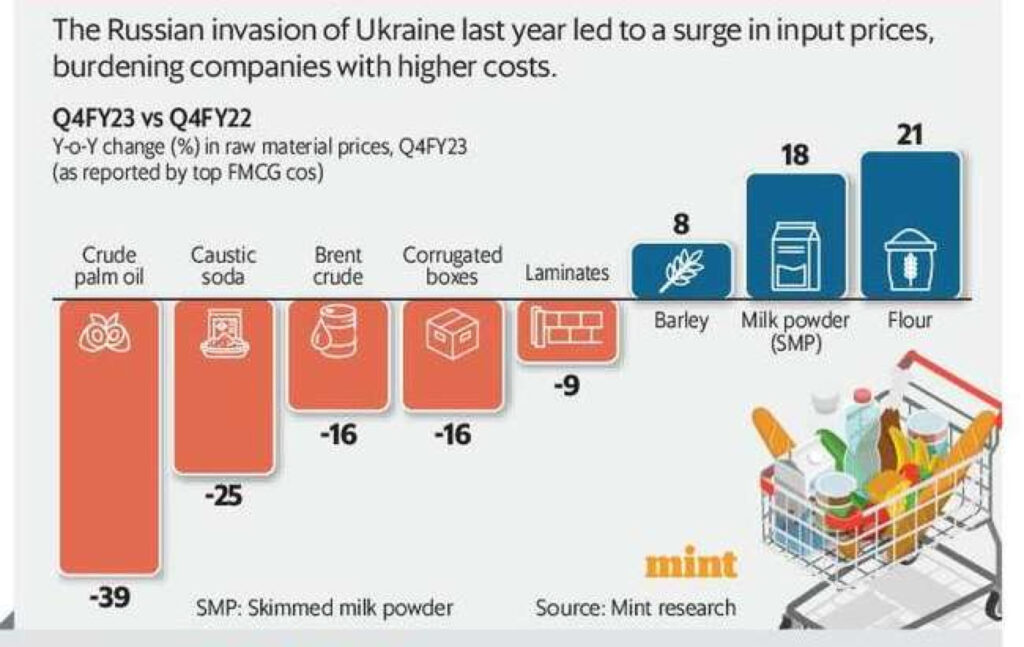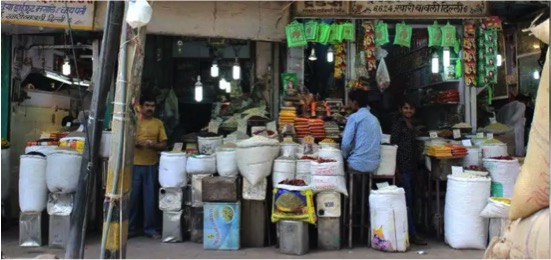A range of businesses, from quick-service restaurants and apparel retailers to biscuit makers and edible oil producers, are refraining from raising prices, with some even cutting them as commodity costs cool and high prices dampen demand, offering consumers respite from soaring inflation.
Packaged consumer goods company Marico Ltd, for example, cut prices of its Parachute coconut hair grooming oil portfolio and Saffola edible oils in the current quarter.
“The peak for 1 litre of Saffola oil was ₹230, which has come down to ₹170 in May,” said Saugata Gupta, managing director and CEO of Marico, which has taken at least two price cuts on its edible oils portfolio in the past quarter in line with raw material price reductions.

Earlier this month, Mother Dairy too announced price cuts on its Dhara edible oil portfolio worth ₹15-20 per litre across variants on account of the reduced impact of international markets and ease in availability of the domestic crop. Similarly, Adani Wilmar Ltd dropped prices of its top-selling 1-litre pack of Fortune soybean oil in May; prices of this variant have been going down month-on-month since January, the company said.
The Russian invasion of Ukraine last year led to a surge in input prices, burdening companies with higher costs. As a result, companies resorted to passing on higher prices to consumers, apart from implementing cost-saving measures.
The higher prices of everyday goods, such as edible oils, biscuits, and soaps, in turn, dampened consumer demand.
However, certain commodities are showing signs of cooling down significantly. In the March quarter, the price of crude palm oil, utilized in soap production, fell 39% from a year earlier. Similarly, Brent crude fell 16% during the same period.
However, milk powder rose 18% from a year ago, and flour prices gained 21%.
But despite the upward trend in milk and flour prices, biscuit maker Britannia Industries initiated price cuts or offered promotions on some brands and packs, the company said in a call with investors after its March quarter earnings this month.
“With some softening of material prices in the second half of this year, we have stepped up cost efficiencies and evaluating if there are some corrections in price that we need to make. Outlook is that we will remain vigilant on competitive pricing actions, and we will closely monitor the price of wheat and sugar and wherever necessary, we will make the right decisions on if there is a price reduction required,” Varun Berry, vice chairman and managing director of Britannia, said during the conference call.
However, consumers may still end up paying more for clothing this season. That’s because several apparel brands sourced raw materials such as cotton at elevated prices last year.
“Spring-Summer 2023 is the most expensive season because this is when people buy cotton at the highest prices. We bought this cotton last year. In autumn-winter, you will not see a price increase, because by then, it would have stabilized,” said Ramprasad Sridharan, CEO and managing director of Benetton India Pvt. Ltd.
Meanwhile, fashion retailer Lifestyle said price hikes have tempered down, with the retailer eyeing “low single-digit” price hikes this year. “While price increases continue, the extent of price increase is coming down. In the last quarter of 2021, we saw a record increase in cotton yarn prices, which increased by almost 40%; that’s the key raw material input for 90% of our products.
Meanwhile, leather prices also increased, as imported footwear from Chinese vendors saw a huge increase in supply chain costs. All this, put together, saw a very strong price increase last year. This year the price increase has come down to low single digits,” said Devarajan Iyer, executive director and CEO of Lifestyle.
Source : The Mint May 19th 2023

